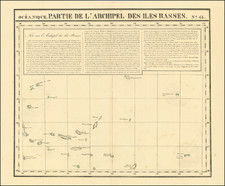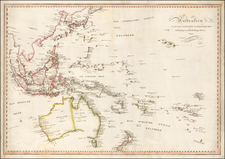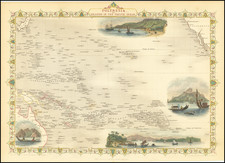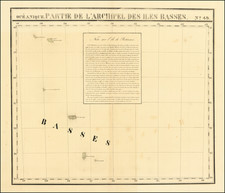Detailed map of South Georgia, showing the tracks of Lieutenant John Shortland.
John Shortland (1739–1803) entered the Royal Navy in 1755 as a midshipman and served under Admiral Boscawen off Newfoundland, under Admiral Byng off Minorca and under Admiral Rodney in the West Indies. Promoted to the rank of lieutenant in 1763, he was engaged in the transport service between England and America. He commanded a transport fleet taking reinforcements to the relief of Gibraltar in 1782 and after returning with troops from Halifax in 1786, he was appointed naval agent to the transports of the First Fleet. A large part of the credit for the success of the First Fleet voyage was due to the vigilance and efficiency with which Shortland discharged his responsibilities as Governor Arthur Phillip was detained in London until 11 May 1787, two days before the fleet sailed. He had also procured appointments on the expedition for his sons, John Shortland and Thomas George Shortland.
Shortland after leaving the Cape of Good Hope, with Phillip on HMS Supply with three of the fastest transports, Alexander, Friendship and Scarborough, sailed ahead of the rest of the fleet as an advance party arriving at Botany Bay, Australia, on 17 January 1788. After remaining in Australia until 14 July, he sailed for England in the Alexander, carrying the first dispatches of Governor Phillip to the Secretary of State for Foreign Affairs Francis Osborne, accompanied by the Borrowdale, Prince of Wales and Friendship.
During the voyage via Batavia, Shortland discovered and charted many islands and reefs. He named the Treasury Islands, named a strait Shortland Strait, an island Shortland Island, and island group Shortland Islands after himself. During the trip to Batavia, the Friendship was scuttled near Borneo. Shortland arrived back in England in May 1789. He strongly urged the Admiralty to have the eastern coast of Australia properly charted, and as a result the Secretary of State for Foreign Affairs dispatched Matthew Flinders in HMS Investigator.
Shortland was promoted to commander in 1790 and, after further active service, retired to Lille, France, where he died in 1803. He was survived by his widow, two sons and two daughters. John Shortland is often confused with his son John Shortland, also a fine seaman. One mistake occurred on the celebration of the son's discovery of the Hunter River, and a second, on the 150th anniversary of the same event, when Australia Post issued a stamp that showed the face of the father instead of the son.
References










![Kwajalein (Kwajalein Island / Kwajalein Atoll, Marshall Islands]](https://storage.googleapis.com/raremaps/img/small/77062.jpg)



![[Straits of Le Maire, Nova Guinea, South Pacific]](https://storage.googleapis.com/raremaps/img/small/61345op.jpg)